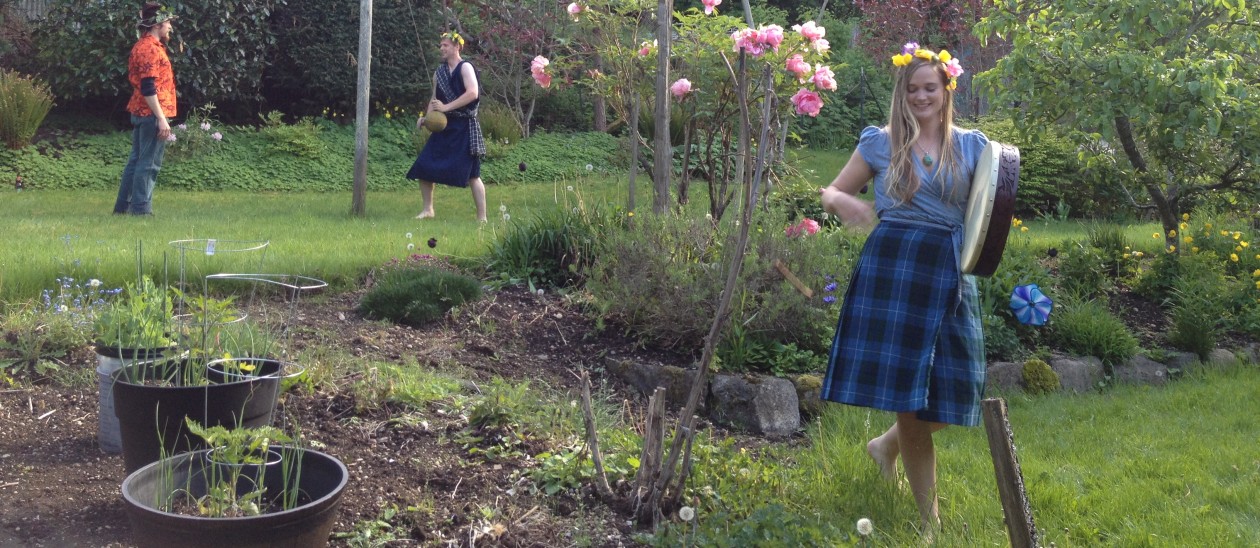
What is Witchcraft?
(Note: I will be using the terms “Magick” and “Witchcraft” somewhat interchangeably, however there are subtle differences in the practices, as we will see later in this course. For now, consider them 2 sides to the same coin.)
Even in our modern world, the fundamental symbols of many of our core rituals often stem from an primordial world view steeped in sympathetic magick. In some cultures this means burying the dead as if planting a seed for rebirth, or the association with the abundance or restriction of sexual activity with a fertile harvest. Humans are symbolic thinkers, it is what gives us the gift of language and writing (or, alternately, our linguistic abilities are what helped develop our symbolic thinking.) At it’s foundation, Magick and Witchcraft are simply the art of influencing the world around you at an energy-based level. And yet it is so much more than that. For some Witchcraft is a religion or a component of their spiritual practices. Others view it as a skill or an art. Witchcraft can be used to heal or harm, to protect or prosper. One of the factors that makes differentiating between Witchcraft and other religious practices difficult is that it comes in so many flavors. People invoke the powers of gods, land spirits, ancestors, the elements, nature spirits, and the dead. They practice alone or in groups, indoors, outdoors, openly or in secret. Some believe they can actually alter the physical world, others view it more as a meditative practice. There are even some branches of Magick that profess an atheistic world view and consider their practices as rooted in physical science. With no set unifying dogma and little prescribed praxis, recognizing Magick and Witchcraft often boils down to “I know it when I see it”.
Not unlike Schrödinger’s cat, the definition and reality of Witchcraft is partially determined by who is observing it. Whether or not practices such as Shamanism or the rites of the Catholic church fall under the category of Witchcraft depends on the perspective of the observer. Specifically, some sects of the Abrahamic religions dictate that all forms of conjuring, spellcraft, or communing with spirits are are Satanic in nature- even down to accusing other Abrahamic groups as engaging in Witchcraft. The Catholic mass, with its symbolic acts of ritual cannibalism and abundance of gestures, bells, candles, and chanting, holds more than just a superficial resemblance to many Magickal rites, however I would not advise suggesting this to a devout Catholic. The term is often also used to describe traditions, beliefs, and rituals that are viewed by the Western world as being “primitive”. This view is often inaccurate. Animism or tribal religions do not automatically equate to what could be defined as Witchcraft. Others doubt its existence entirely and find those who adhere to its practices laughable. I believe that a lack of knowledge about what Magick and Witchcraft actually are and the functions they serve within a society partially contribute to this attitude, and that the more deeply we look at these phenomena the more we can appreciate the elegance of magical thinking regardless of how factually accurate we believe it to be.
Finally, researching this subject, especially with a focus on Western Europe and its colonies, is proving to be profoundly difficult. There is much in the way of information about the historical, sociological and political aspects of Magick and Witchcraft, but shockingly little scholarly work about how to define it and how it “works”. My belief is that this is not considered a reputable area of study for most serious academics unless it is shrouded in the safe filter of historical context or the exoticized “otherness” of an aboriginal culture. I have had to resort to using some of the more academically trustworthy books by New Age publisher Llewellyn. While I do not normally consider them to be a reliable source, in some cases they can certainly be considered a primary source, as many of their authors are the creators and advocates of the modern Pagan and Witchcraft revival.
My objective in this class is not to determine if Witchcraft is “real”. I am going to approach the subject as if its efficacy and credibility are unquestioned, simply because my job here is not to determine it’s reality but to discuss it as it stands. I will be using certain contentious terms, like “superstition”, not to degrade the belief or action, but because there really isn’t another accessible term for it. Even the term Witchcraft itself is considered controversial by some, as we will see later in this course. Ultimately, I want this course to unfold in an organic way, rather than working towards supporting a specific agenda. This may lead to some disjointed or contradictory journal entries, but hopefully as the course progresses it will lead to a more cohesive and deeper understanding of the subject at hand,
References
Russell, J. B. (1980). A history of witchcraft, sorcerers, heretics, and pagans. London: Thames and Hudson.
Oldridge, D. (2002). The witchcraft reader. London: Routledge.
Merrifield, R. (1988). The archaeology of ritual and magic. New York: New Amsterdam.
